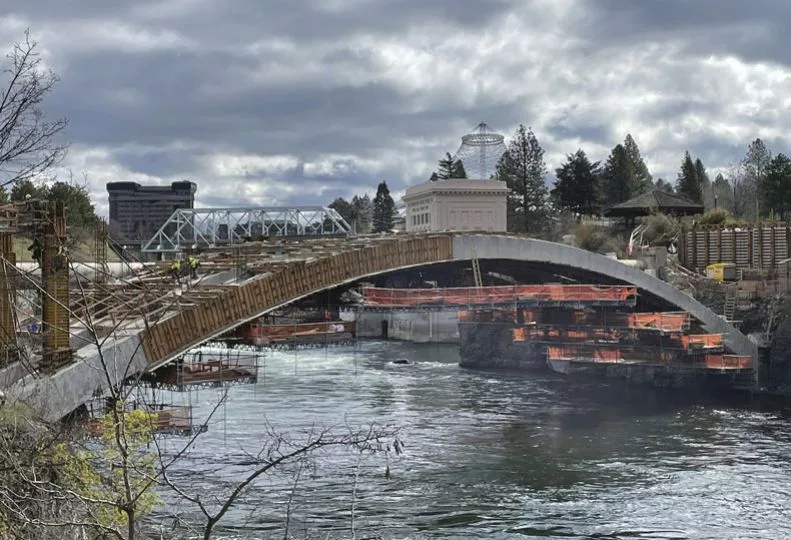End in sight for multiyear bridge projects in city
East Trent span to carry traffic in spring; Post Street structure to open in fall

Two prominent Spokane bridge-replacement projects valued at a total of nearly $50 million are expected to wrap up this year.
In downtown Spokane, on the west edge of Riverfront Park, the city of Spokane is replacing the 106-year-old, 333-foot-long Post Street Bridge. The structure was closed to vehicles in May 2019 following a structural analysis that determined it couldn’t continue to carry traffic safely.
The project is on track to be completed in late fall, says Marlene Feist, Spokane’s public works director.
Spokane-based Max J. Kuney Co. is the contractor on the project, and Seattle-based KPFF Consulting Engineers is providing design services.
The construction value of the project is estimated at $23.5 million, up from an earlier estimate of $18.5 million.
“The bulk of the increased cost was the result of a change order of $3.2 million from spring and summer of 2022,” Feist says. The change order was approved to accommodate more extensive repairs on the arches of the bridge and to pay for changes in construction sequencing needed to perform demolition safely, she says.
Once completed, the bridge will host a single lane of northbound traffic, and will allow for pedestrian, bike, and scooter traffic. One aesthetic difference will be the placement of the new sewer line, which will be tucked underneath the new bridge. The line had been exposed on one side of the bridge previously.
Less than 1 1/2 miles away, spanning the Spokane River just east of Hamilton Street, the East Trent Bridge replacement project is expected to be completed in either late spring or early summer of this year, says Jody Qualley, Washington state Department of Transportation project engineer.
“I just called the contractor … to confirm his thoughts, and we’re still looking in June,” Qualley says.
The East Trent Bridge replacement project is valued at about $25.8 million. Garco Construction Inc., of Spokane, is the contractor on the project.
Initial construction for the project started in March 2020. According to the project overview on WSDOT’s website, the 110-year-old bridge’s roadway surface, bridge rail, and piers required continuous extensive maintenance and repairs.
The new bridge will be taller and wider than its predecessor. Design plans call for a 6-foot-wide sidewalk on the north side, one lane of traffic and a roadway shoulder in each direction, and a 10-foot-wide path for pedestrians and bicyclists on the bridge’s south side.
Related Articles
Related Products


_c.webp?t=1763626051)
_web.webp?t=1764835652)

